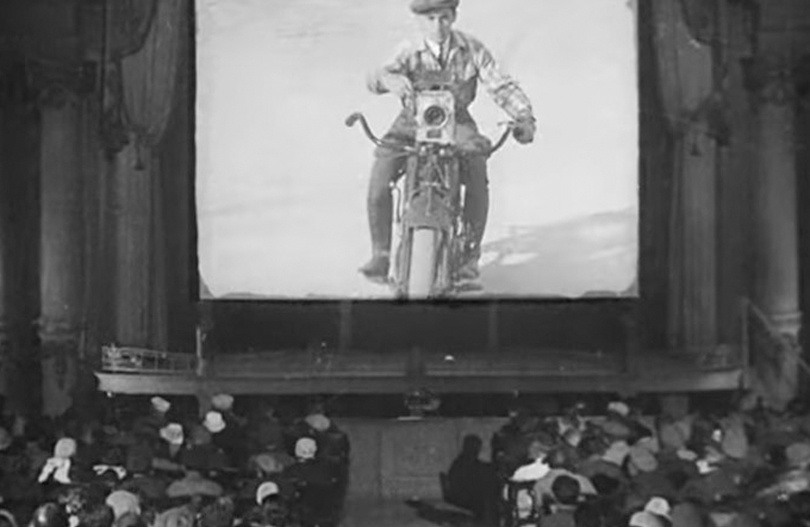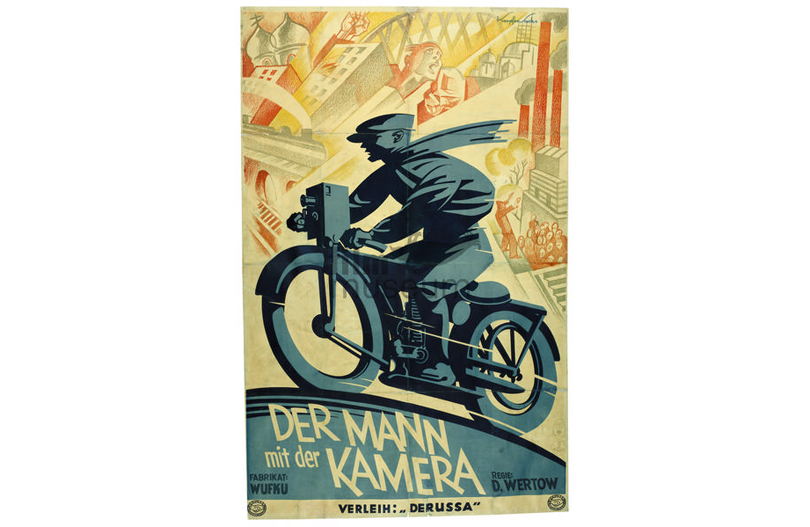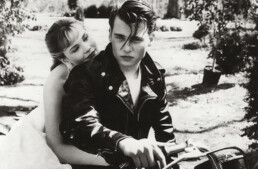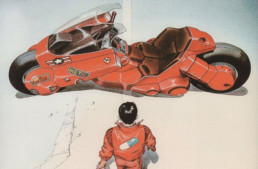The Vintagent Classics: The films that inspired us.
MAN WITH A MOVIE CAMERA (1929) AKA CHELOVEK S KINO-APPARATO
Run Time: 1:08:00
Producer: Silent film Production Co, VUFKU
Director: Dziga Vertov
Writer/Editor: Dziga Vertov
Key Cast: Soviet citizens
FILM MAKERS
Vertov, a Soviet film director, belonged to a movement of filmmakers known as the kinoks, or kino-oki (kino-eyes). Vertov, along with other kino artists declared it their mission to abolish all non-documentary styles of film-making, a radical approach to movie making. Most of Vertov’s films were highly controversial, and the kinok movement was despised by many filmmakers. Today, Man With A Movie Camera is considered one of the most innovative and influential films of the silent era.
SUMMARY
Vertov redefined the medium of still and motion-picture photography through the concept of kino-glaz (cine-eye), asserting that the recording proficiency of the camera lens made it superior to the human eye. In a double image in Chelovek s kinoapparatom (Man with a Movie Camera), the eye is superimposed on the camera lens to form an indivisible apparatus fit to view, process, and convey reality, all at once. Other sequences show cinema transforming traditional craft into industrial production through the juxtaposition of a series of images: turning spools of thread are likened to the turning reels of a film projector; the cleaning of the streets is equated to the cleaning of film; sewing is compared to editing; and a hydroelectric plant that provides energy for the textile industry is linked to the power on which the cameraman and the film industry rely.
As The Man with the Movie Camera begins, the cameraman climbs out of the “head” of the camera. The film then takes its viewer on a humorous, kaleidoscopic ride through Soviet cities while drawing parallels between the moviemaker and the factory laborer, and exposing the filmmaking process. At one moment Vertov presents a man riding a motorcycle, and then, surprisingly, he shows us shots of the cameraman filming the motorcycle, then shots of the editor editing those shots.
Making use of all filming strategies then available—including superimposition, split screens, and varied speed—Vertov created a revolution in cinematic art with his defiant deconstruction of dramatic norms. He had previously been a medical student. Under the influence of Futurist art theories and Futurism’s confidence in the machine, he changed his name from Denis Kaufman to Dziga Vertov (meaning “spinning top”) and began to experiment with sound recording and assemblage. After the Bolshevik Revolution of October 1917, along with his wife/editor and brother/cameraman he made films and developed polemics that called for an end to filmmaking as it was then known. “We proclaim the old films, based on the romance, theatrical films and the like, to be . . . mortally dangerous! Contagious!” he stated. Like others of his generation, Vertov believed that the creation of an objective “cinema eye” (or kino-glaz), would, in destroying old habits of viewing, help build a new, proletarian society. – MOMA
RELATED MEDIA
Watch the FULL FILM on Archive.org
Read more about the Motorcycles in the film HERE





Interesting from a cinematography point of view .. very interesting indeed . …
… but what mindless idiot put a 1960’s jazz soundtrack .. to a 1920’s Soviet …
( jazz was outlawed in the SU under the penalty of torture and possible execution throughout most of the SU’s existence .. but especially in the early days of the great cultural purge of all things capitalist )
… silent B&W film ????
Sigh … revisionist history strikes again … I guess